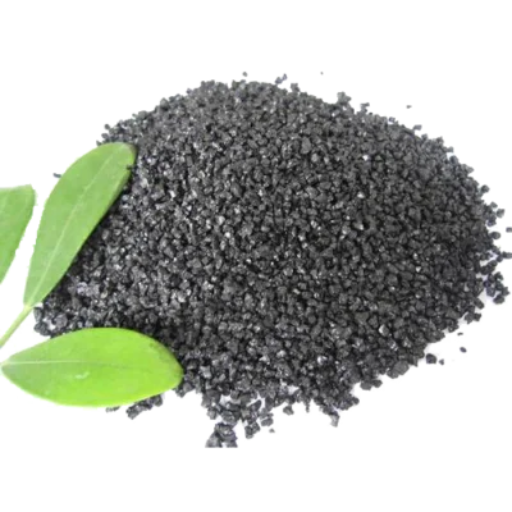The health and enhancement of plants in soil through potassium humate fertilizers are topics discussed in this all-inclusive report. It is an organic compound that originates from humic substances, and it improves soil fertility, increases nutrient uptake, and enhances the growth of plants in general. Whether you are a beginner or have been practicing gardening for an extended, knowledge of how to use this fertilizer efficiently can make significant differences in your farming activities. This article will explore different techniques that can be used to apply it, how much should be used, and why potassium humate is changing home gardening and agriculture, too.
What is Potassium Humate, and Why is it Important?

Why is Potassium Humate Advantageous?
The advantages of potassium humate are numerous and can improve soil quality and plant health. First of all, it improves the structure of the soil, thereby enhancing aeration as well as retention of water. This leads to better root growth due to a more favorable environment. Secondly, potassium humate has been helpful in nutrient availability so that plants can take up the minerals they need for growth. This compound’s other key role is to stimulate microbial activity in the soil, creating a healthy ecosystem. Furthermore, this fertilizer helps reduce stress on crops due to droughts or poor soils, increasing yield and productivity. Using potassium humate allows sustainable agricultural practices to be maintained, resulting in healthier, more resistant plants.
How Does It Improve Soil Structure?
Potassium humate enhances soil structure through varied mechanisms that create an optimal plant-growing environment. First, it promotes soil aggregation by binding particles together, enhancing porosity. This improved porosity facilitates aeration and root penetration. Second,potassium humate’s organic matter increases moisture retention through increased water-holding capacity in dry seasons.
Technical Parameters and Justifications:
- Cation Exchange Capacity (CEC): Potassium humate can increase CEC up to 10-50 mmol/kg depending on the type of soil it’s mixed with. Soil with higher CEC retains more nutrients, which become readily available for plants.
- Soil pH: Through its ability to buffer pH fluctuations, potassium humate stabilizes soil pH within an optimal range where needed nutrients remain soluble and available. Ideally, crops grow best in slightly acidic conditions, with most crops having a pH ranging between 6.0 and 7.5.
- Organic Matter Content: Incorporating potassium humate into soils could increase organic matter content by 1-5%, thus improving the fertility status of such systems and boosting microbial activity.
At what cost does potassium humate influence these factors to create a balanced and productive soil ecosystem, ultimately improving plant health and agricultural productivity?
What is the Role of Humic Acid on Plant Growth?
My research on humic acid taught me that it is vital in promoting plant growth through several mechanisms. First, humic acid enhances the uptake of nutrients by making essential minerals and trace elements more bioavailable to plants. This means that plants can easily access nutrients for their growth. Further, like potassium humate, humic acid enhances soil structure by increasing air supply and water retention, thus resulting in a better root system. Specifically, targeted microbial activity, such as nutrient cycling in soils, is stimulated by this compound. Therefore, incorporating humic acid will increase crop growth and yield higher.
How to Apply Potassium Humate Fertilizer?
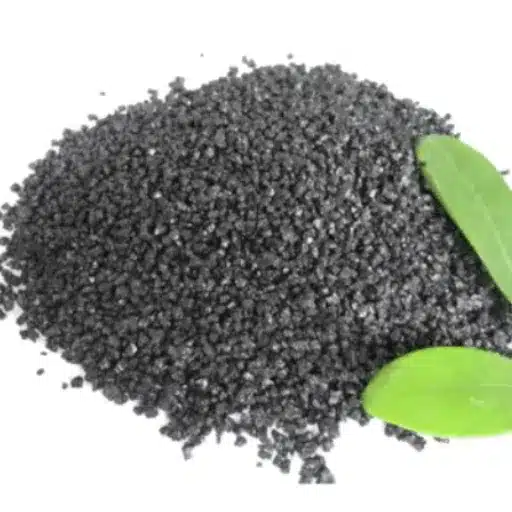
What are the Best Potassium Humate Application Methods?
From my experience, the best application methods for potassium humate will depend on specific plant requirements and soil conditions. One is mixing with water to make a liquid concentrate that can be applied through foliar spraying or drenching the soil. By this method, plants absorb it quickly and enhance nutrient uptake effectively. In addition, I have seen it beneficial for long-term fertility improvement by broadcasting dry granules of potassium humate directly onto the soil’s surface, primarily when worked into soils. It is also important not to lose sight of applying potassium humates during planting or before critical growth phases to maximize its impact on plant development. You may have to adapt these application techniques for your crop type and environmental settings.
Step-by-Step Guide to Potassium Humate Application
- Determine Soil Conditions: First, assess soil type and pH levels to determine the ideal concentration of potassium humate.
- Choose an Application Method: Based on these findings, decide if you want a liquid solution or dry granules. I like mixing powdered potassium humate with water into a highly concentrated fluid for quick results.
- Mixing: If it’s a liquid solution, mix the recommended amount of potassium humate with water in a sprayer/tank. If it’s a dry application, measure the granules according to their prescribed dosages.
- Timing: Apply either solution or granules during the planting stage or towards critical stages for more effective action.
- Foliar or Soil Application: In liquid form, this could either be done by spraying leaves (for absorption through leaves) or putting them directly into the root zone by saturating the soil around the base of roots. Just spread these dry granules evenly across the surface of your moistened plot topsoil.
- Watering: After the treatment, the plants need light watering so that the potassium humate is activated and absorbed more easily by their roots.
- Monitor and Adjust: Regularly observe your plants for changes in growth and alter your application method or frequency as necessary to achieve the best results.
Foliar vs. Soil Potassium Humate Application: Which is Better?
Most of the time, my choice between foliar potassium humate application and soil depends on the needs of my crop and its development stage. Since foliar application absorbs nutrients directly through the leaves, it allows for quick absorption, making it ideal for instant impact during critical growth stages. Nonetheless, I find that soil application provides a slow-release mechanism for not only sustaining nutrient release but also enhancing root development over time. After looking at the best resources on this topic, you should consider checking your crop’s current status and desire—use leafy sprays when you want immediate impacts or apply them to soils if you prefer long-term gains. Combining these two approaches may be most effective depending on circumstances.
What is the Recommended Dosage for Potassium Humate?
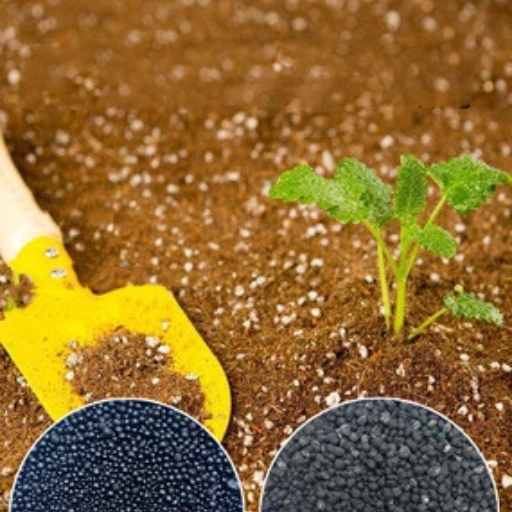
What is the process of calculating the correct dosage of potassium humate?
I ponder several aspects to determine the proper amount of potassium humate, relying on insights from reputable sources. Initially, I appraise the kind of plants involved; diverse crops have different nutritional needs. In general, I recommend a starting point for soil application at 1-5 pounds per acre while considering the state where soil has been left and the crop cultivated. I use approximately 1-2% dilution of potassium humates mixed with water for foliar application.
Also, this depends on my plants’ growth cycle. Young plants or seedlings need lower dosages to avoid nutrient burn, but mature ones may require more since they call for more nutrients to achieve optimal yield. My soil test informs me about what is already there regarding nutrients so I can apply them selectively. It’s always important to observe plant response and adjust accordingly. If I see signs of nutrient deficiencies, then it might be necessary to slightly increase my dose without exceeding guidelines, which could lead to adverse effects. Applying these specific strategies and adjusting them according to my findings enable me to optimize how potassium humate benefits me.
Factors Influencing Potassium Humate Dosage
Within my practice, many factors determine the dosage levels applied for potassium humate for effective and well-calibrated outcomes. Beginning with soil type, sandy soils will require smaller amounts due to quick drainage, while heavier clay soils need higher applications because they retain nutrients better. Moreover, some plants inherently need more potassium than others, thereby necessitating customized solutions in such cases, while local climate factors like temperature and humidity levels affect uptake during periods of higher stress where plant health support may be required by changing chemical inputs aligned with this line of thought (Wyness et al., 1978). Finally, the overall healthiness of soil and existing nutrient conditions through comprehensive action figure-based testing determines doses of nutrient application that I would use to maximize the benefits of potassium and humate on my farm.
Dosage Recommendations for Various Crops
When deciding the correct dosage of potassium humate for different crops, I generally follow some basic principles depending on specific nutritional requirements for each crop type. In the case of leafy greens like spinach and lettuce, this can be about 1-2 lbs per acre to encourage better growth rates and absorption capacities, respectively (Hoeft et al., 1979). In terms of fruiting plants such as tomatoes and peppers, I find that they are most productive when given between 2-4 lb/acre, which is suitable since these crops demand more potassium during the development stages. On average, root vegetables, including potatoes or carrots, usually do well with a dose ranging between three to five pounds per acre due to their positive role in tuber formation and general yield increase. Also, I must consider my soil test results before making recommendations based on individual farm conditions to ensure optimum plant productivity and health status.
Can Potassium Humate Be Used with Other Fertilizers?
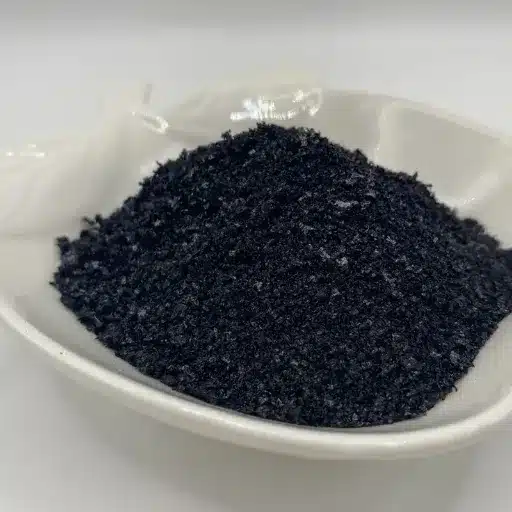
Mixing Nitrogen Fertilizer with Potassium Humate
I have found that adding potassium humate to nitrogen fertilizer can be beneficial. The fast action of Nitrogen fertilizers makes them appropriate for complementing the nutrient uptake enhancement by potassium humate. By combining these, plants can be facilitated to have a more balanced nutrient availability. Thus, to maximize its effects, I apply potassium humate concurrently with nitrogen fertilizer at the beginning of the season. This gives healthy growth and improves soil structure and microbiological activity. My approach is usually refined by paying close attention to soil tests and plant responses to ensure excellent results.
Compatibility of Organic and Synthetic Fertilizers
Potassium humate is compatible with synthetic and organic fertilizers, making it highly versatile in my fertilizer program. In case I use organic forms such as manure or compost, potassium humate helps in better nutrient availability while enhancing microbial activity in the soil, thus amplifying organic amendment benefits even further. These two are, therefore, very significant in improving nutrient absorption from synthetic fertilizers and reducing leaching, thereby making nutrients much more accessible to crops grown by me. Ultimately, I follow product guidelines and consider specific crop needs to achieve desired outcomes.
Precautions When Using Humic Acid Fertilizer Mixtures
To ensure the efficiency and safety of plants, I take several precautions, including humic acid fertilizer, in my routine practice. On one hand, exceeding recommended application rates should be avoided because they may lead to imbalances in nutrient provision. According to industry standards, 1-5g per liter for liquid applications is often recommended (top websites will give you more information), while granular forms suggest 0.5-2kg per hectare depending on soil type and crop needs.
Additionally, before applying all your fertilizers, you should conduct a jar test to determine compatibility with other fertilizers and monitor any adverse reactions. Soil pH should also be watched as humic acid might lower it, which may not suit all crops. I maintain a pH range of 6.0-7.5 for most vegetables and grains to optimize nutrient availability.
Finally, regular soil tests are done to assess nutrient profiles and organic matter levels. This way, I can know when and where to stop using humic acid fertilizer, ensuring that plants derive maximum benefit without the risks associated with over-application or incompatibility.
What are the Effects of Potassium Humate on Various Plants?
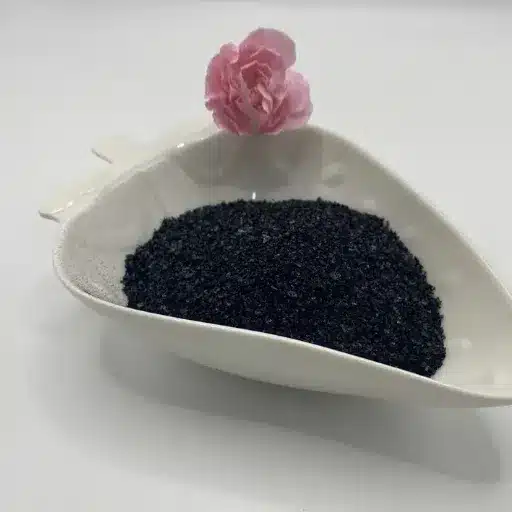
Advantages of Potassium Humate for Tomatoes
Through my research on the best sites, I learned that using potassium humate benefits tomato plants. First, it increases nutrient uptake, allowing my tomatoes to absorb nitrogen, phosphorous, and potassium more effectively. Second, it enhances soil structure, improving water retention, which matters most during dry spells. Third, it boosts their resilience against diseases and other environmental factors. In general, including potassium humate in my tomato growing routine has given me healthier plants and higher yields.
How Does Potassium Humate Enhance Flowering and Fruiting?
In my experience with different plant species, potassium humates are critical in promoting flower bud development and fruit set. This information comes from the best gardening resources, such as those at the top of Google search results page one. Again, it also helps in root growth and is vital for nutrient absorption, including water, especially at vigorous growth. Furthermore, potassium humate nourishes all my crops by enhancing soil percolation and moisture-holding capacity. Besides this, it promotes the development of beneficial microorganisms in soils, leading to healthy plant establishment and high yields. All in all, incorporating potassium humates into my production practices has quantitatively improved the lives of flowers and fruits.
Effects on Seedlings and Young Plants
Accordingly, using potassium humates has been an extremely positive practice for seedlings, and young plants like mine always do significantly better with them than without them). A closer look at several credible garden websites shows that this substance improves seed germination rates and the early establishment of root systems (Genesisafrica, 2010). I am always impressed by how deeply rooted these tender shoots become, and this further helps them absorb more nutrients from the ground they grow from into themselves. This product also assists in mitigating transplant shock experienced by young plants when they are moved into a new area. My young plants have blossomed and gained good ground because of better soil fertility and mineral uptake.
Is Potassium Humate Suitable for Organic Farming?
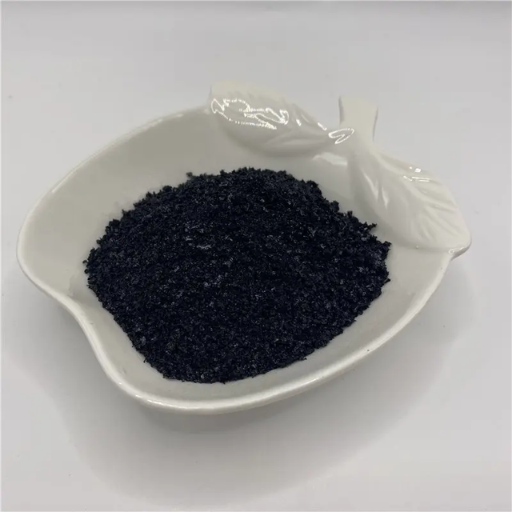
Certifications and Standards for Organic Fertilizers
In my research experience, potassium humate is a viable organic farming option if it adheres to some regulations and certifications. As per the USDA’s National Organic Program, organic fertilizers must be sourced naturally and avoid synthetic additives. I have noted that several products of potassium humate are from Leonardite, a natural mineral, and hence are in line with organic standards. Additionally, many trusted brands have been certified by organizations such as OMRI (Organic Materials Review Institute), meaning their products are safe for use in organic farming. This makes me believe that when I apply potassium humate, I am not only improving the health of my soil but also following rules related to organic farming.
Using Potassium Humate in Eco-Friendly Farming Practices
Whenever I think about how using potassium humate has transformed my eco-friendly farming methods, there is always a smile on my face. It has been found to improve soil structure, thus promoting moisture retention and fostering a healthy microbial ecosystem. One can reduce the need for synthetic fertilizers by applying potassium humate since it systemically enhances nutrient availability and uptake. Besides supporting plants against environmental stressors, they also provide sustainable conditions for my crops to thrive. Its use aligns well with environmentally conscious farming practices while ensuring better yields.
Environmental Benefits of Humic Substances
While investigating the various uses of humic substances beyond improving soil health, I discovered they have multiple environmental benefits. For instance, these substances make fertility soils better, thus enabling them to retain more water and prevent erosion, which is essential for healthy ecosystem maintenance. On top of that, humic substances help in carbon sequestration by acting as a biological carbon sink, thereby dealing with climate change challenges. They also cleanse polluted soils by catalyzing the breakdown of poisonous chemicals and heavy metals into nontoxic materials to reduce the impact on water sources. By incorporating humic substances into my farming activities, I am contributing to a more balanced and sustainable ecological system while at the same time taking care of my soil.
Frequently Asked Questions (FAQs)

Q: What is potassium humate fertilizer?
A: Potassium humate fertilizer is an organic fertilizer derived from humic acid. It improves soil health, enhances water-holding capacity, and provides essential plant nutrients. It’s commonly available in humate powder, potassium humate powder, and liquid potassium humate.
Q: How do I apply potassium humate as a base fertilizer?
A: To use potassium humate as a base fertilizer, mix it into the soil before planting. This method helps improve soil structure and increase its nutrient-holding capacity. You can use either humate powder or potassium humate powder for this purpose.
Q: Can I use potassium humate in drip irrigation systems?
A: Yes, potassium humate works well with drip irrigation systems. Its water-soluble nature ensures it is easily absorbed by soil and plants, providing consistent nutrients directly to the root zone.
Q: How is liquid potassium humate applied?
A: Liquid potassium humate can be applied through irrigation systems or as a foliar spray. For irrigation, mix it with water and use it in the soil. It can be sprayed directly onto the leaves as a foliar spray for quick absorption.
Q: Is potassium humate compatible with other fertilizers?
A: Yes, it’s considered compatible with various other fertilizers, including NPK fertilizers. Combining potassium humate with other fertilizers can enhance plants’ overall nutrient uptake.
Q: How often should I fertilize tomatoes with potassium humate?
A: Tomatoes should be fed potassium humate every 30-50 days during the growing season. This helps promote healthy plant growth and improve fruit yield.
Q: What is the role of potassium humate as a soil conditioner?
A: Potassium humate acts as an excellent soil conditioner. It improves soil structure, enhances water-holding capacity, and increases microbial activity, which is vital for healthy soil and plants.
Q: Can potassium humate be used as a foliar feeding option?
A: Yes, foliar-feeding tomatoes with potassium humate is effective. Plants can quickly absorb the nutrients by spraying an aqueous potassium humate solution directly onto the leaves, leading to improved growth and health.
Q: What are the best conditions for applying potassium humate?
A: While potassium humate can be applied in various conditions, it is particularly effective when the temperature is high. Warm conditions enhance the fertilizer’s absorption and efficacy.
Q: Can potassium humate be used for all plant species?
A: Yes, potassium humate is suitable for a wide range of plant species. It provides essential nutrients and acts as a plant growth stimulant, benefiting various crops and ornamental plants.



